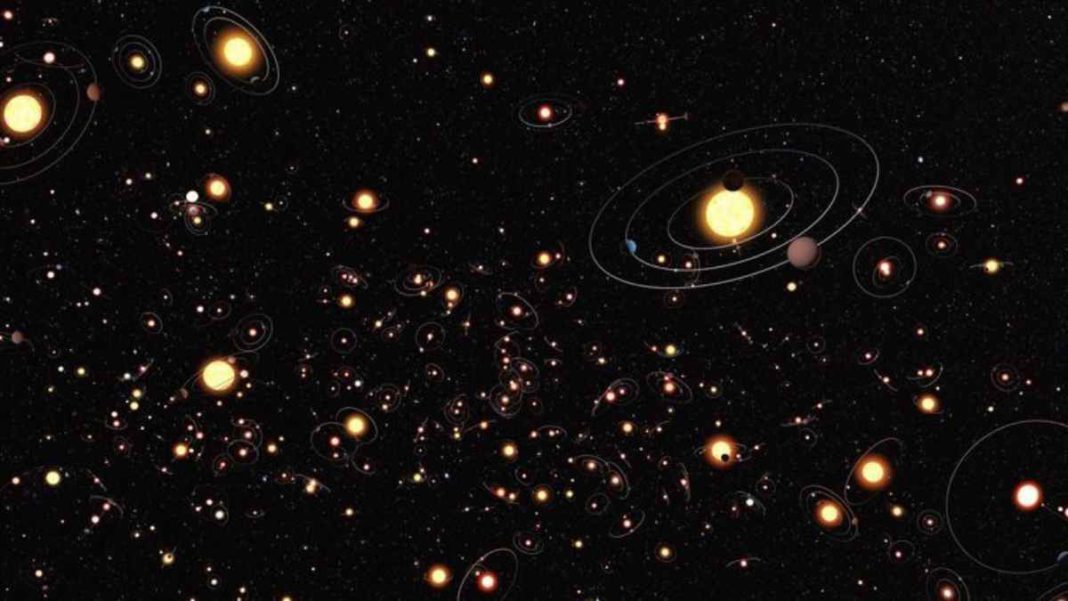UNITED STATES: In a groundbreaking development, NASA has made a stunning breakthrough in the search for signs of life beyond Earth. Utilizing the state-of-the-art James Webb Space Telescope, scientists have detected a carbon molecule that serves as the foundation for all known life forms.
The discovery of this carbon compound, known as methyl cation (CH3+), is a significant milestone in our understanding of the potential for life in the universe.
NASA announced the findings in a recent post on its website, shedding light on the molecule’s importance in facilitating the formation of more complex carbon-based compounds.
Methyl cation was detected within the protoplanetary disk of a young star system named d203-506, located a staggering 1,350 light-years away in the awe-inspiring Orion Nebula.
This detection, the first of its kind in space, holds immense implications for astrobiology, as carbon compounds are widely regarded as the building blocks of life.
According to NASA’s official statement, “Carbon compounds exist in the building blocks of all known life, and their presence in space is particularly fascinating for scientists seeking to unravel the mysteries of life’s origins on Earth and the possibility of life elsewhere in the universe.”
The James Webb Space Telescope played a pivotal role in this groundbreaking discovery. With its extraordinary spatial and spectral resolution, coupled with unparalleled sensitivity, the telescope enabled scientists to identify the distinct emission lines associated with CH3+ and confirm its existence.
This achievement not only affirms the remarkable capabilities of the telescope but also underscores the central role of CH3+ in interstellar chemistry.
The scientific team’s lead researcher, Dr. Marie-Aline Martin-Drumel of the University of Paris-Saclay, emphasised the significance of the finding by saying, “This finding not only validates the incredible sensitivity of Webb but also highlights the postulated central importance of CH3+ in interstellar chemistry.”
The star system d203-506, although a small red dwarf, experiences intense ultraviolet (UV) radiation due to its proximity to nearby hot, young, and massive stars.
While UV radiation typically poses a threat to complex organic molecules, scientists now speculate that it may actually provide the necessary energy for the formation of CH3+.
Once generated, CH3+ then acts as a catalyst for further chemical reactions, leading to the development of more intricate carbon-based molecules. Interestingly, the molecular composition observed in d203-506’s protoplanetary disk differs significantly from the norm, as no signs of water were detected.
NASA’s remarkable discovery of this carbon compound in space represents a major leap forward in the quest for extraterrestrial life. By unraveling the mysteries of interstellar organic chemistry, scientists gain invaluable insights into the origins and evolution of life in our universe.
The James Webb Space Telescope continues to revolutionize our understanding of the cosmos and our place within it. As astronomers delve deeper into the study of interstellar organic chemistry, Webb’s exceptional capabilities promise to uncover further revelations, potentially shedding light on the existence of life beyond our home planet.
The newfound presence of this fundamental carbon molecule fuels the imagination and excitement surrounding the possibility of life’s existence elsewhere in the universe.
As we embark on this thrilling journey of cosmic exploration, NASA’s breakthrough serves as a reminder that the universe is a vast and dynamic expanse, teeming with endless possibilities.
Also Read: Pee to Purity: NASA’s Achieves 98% Water Recycling Triumph on the ISS



